 W
WThe House of York was a cadet branch of the English royal House of Plantagenet. Three of its members became kings of England in the late 15th century. The House of York descended in the male line from Edmund of Langley, 1st Duke of York, the fourth surviving son of Edward III. In time, it also represented Edward III's senior line, when an heir of York married the heiress-descendant of Lionel, Duke of Clarence, Edward III's second surviving son. It is based on these descents that they claimed the English crown. Compared with its rival, the House of Lancaster, it had a superior claim to the throne of England according to cognatic primogeniture, but an inferior claim according to agnatic primogeniture. The reign of this dynasty ended with the death of Richard III of England at the Battle of Bosworth Field in 1485. It became extinct in the male line with the death of Edward Plantagenet, 17th Earl of Warwick, in 1499.
 W
WAnne de Mowbray, 8th Countess of Norfolk, later Duchess of York and Duchess of Norfolk was the child bride of Richard of Shrewsbury, Duke of York, one of the Princes in the Tower. She died at the age of eight.
 W
WAnne Neville was an English queen, the younger of the two daughters and co-heiresses of Richard Neville, 16th Earl of Warwick. She became Princess of Wales as the wife of Edward of Westminster and then Queen of England as the wife of King Richard III.
 W
WAnne of York was born in the Palace of Westminster, London, as the fifth daughter of King Edward IV of England and his wife, Elizabeth Woodville. She was First Lady of the Bedchamber to the queen in 1487–1494.
 W
WAnne of York, Duchess of Exeter, aka Anne Plantagenet, was the first child of Richard Plantagenet, 3rd Duke of York, and Cecily Neville. She was thus the eldest sister of kings Edward IV (1461–1483) and Richard III (1483–1485); and of Edmund, Earl of Rutland, Elizabeth of York, Duchess of Suffolk, Margaret, Duchess of Burgundy and of George Plantagenet, 1st Duke of Clarence.
 W
WThe Black Adder is the first series of the BBC sitcom Blackadder, written by Richard Curtis and Rowan Atkinson, directed by Martin Shardlow and produced by John Lloyd. The series was originally aired on BBC 1 from 15 June 1983 to 20 July 1983, and was a joint production with the Australian Seven Network. Set in 1485 at the end of the British Middle Ages, the series is written as a secret history which contends that King Richard III won the Battle of Bosworth Field, only to be unintentionally assassinated by his nephew's son Edmund and succeeded by said nephew, Richard IV, one of the Princes in the Tower. The series follows the exploits of Richard IV's unfavoured second son Edmund in his various attempts to increase his standing with his father and, in the final episode, his quest to overthrow him.
Bridget of York was an English princess, the tenth child and seventh daughter of Edward IV and Elizabeth Woodville. She was a nun at Dartford Priory.
 W
WCatherine or Katherine of York was the ninth child and sixth daughter of King Edward IV by his wife Elizabeth Woodville. She was the daughter of Edward IV, sister to Edward V, niece to Richard III, sister-in-law to Henry VII and aunt to Henry VIII.
 W
WCecily Neville was an English noblewoman, the wife of Richard, Duke of York (1411–1460), and the mother of two kings of England, Edward IV and Richard III. Cecily Neville was known as "the Rose of Raby", because she was born at Raby Castle in Durham, and "Proud Cis", because of her pride and a temper that went with it, although she was also known for her piety. She herself signed her name "Cecylle".
 W
WCecily of York, Viscountess Welles was an English princess, the third daughter of Edward IV, King of England, and his queen consort Elizabeth Woodville, daughter of Richard Woodville, 1st Earl Rivers, and Jacquetta of Luxembourg. She was First Lady of the Bedchamber to her sister, Queen Elizabeth of York, in the years 1485–1487.
 W
WEdmund of Langley, 1st Duke of York, KG was the fourth surviving son of King Edward III of England and Philippa of Hainault. Like many medieval English princes, Edmund gained his nickname from his birthplace: Kings Langley Palace in Hertfordshire. He was the founder of the House of York, but it was through the marriage of his younger son, Richard of Conisburgh, 3rd Earl of Cambridge, to Anne de Mortimer, great-granddaughter of Edmund's elder brother Lionel of Antwerp, 1st Duke of Clarence, that the House of York made its claim to the English throne in the Wars of the Roses. The other party in the Wars of the Roses, the incumbent House of Lancaster, was formed from descendants of Edmund's elder brother John of Gaunt, 1st Duke of Lancaster, Edward III's third son.
 W
WEdward V was King of England and Lord of Ireland from 9 April to 26 June 1483. He succeeded his father, Edward IV, upon the latter's death. Edward V was never crowned, and his brief reign was dominated by the influence of his uncle and Lord Protector, the Duke of Gloucester, who deposed him to reign as King Richard III; this was confirmed by the Act entitled Titulus Regius, which denounced any further claims through his father's heirs.
 W
WEdward of Middleham, Prince of Wales, was the son and heir apparent of King Richard III of England by his wife Anne Neville. He was Richard's only legitimate child and died aged ten.
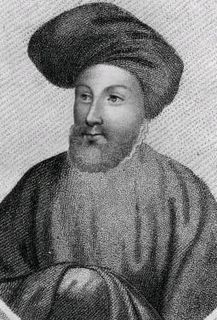 W
WEdward, 2nd Duke of York, was an English nobleman, military commander and magnate. He was the eldest son of Edmund of Langley, 1st Duke of York, and a grandson of King Edward III of England. He held significant appointments during the reigns of Richard II, Henry IV, and Henry V, and is also known for his translation of the hunting treatise The Master of Game. He was killed in 1415 at the Battle of Agincourt whilst commanding the right wing of the English army
 W
WEdward Plantagenet, 17th Earl of Warwick was the son of Isabel Neville and George Plantagenet, 1st Duke of Clarence, and a potential claimant to the English throne during the reigns of both his uncle, Richard III (1483–1485), and Richard's usurper, Henry VII (1485–1509). He was also a younger brother of Margaret Pole, 8th Countess of Salisbury. Edward was tried and executed for treason in 1499.
 W
WElizabeth Woodville was Queen of England as the wife of King Edward IV from 1464 until his death in 1483.
 W
WElizabeth of York was Queen of England from her marriage to King Henry VII on 18 January 1486 until her death in 1503. Elizabeth married Henry after his victory at the Battle of Bosworth Field, which marked the end of the Wars of the Roses. Together, they had seven children.
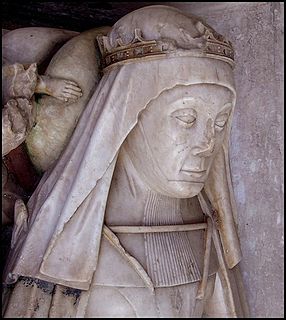 W
WElizabeth of York, Duchess of Suffolk also known as Elizabeth Plantagenet was the sixth child and third daughter of Richard Plantagenet, 3rd Duke of York and Cecily Neville. She was thus a sister of King Edward IV and of King Richard III.
 W
WGeorge Plantagenet, Duke of Clarence, was a son of Richard Plantagenet, 3rd Duke of York, and Cecily Neville, and the brother of English kings Edward IV and Richard III. He played an important role in the dynastic struggle between rival factions of the Plantagenets now known as the Wars of the Roses.
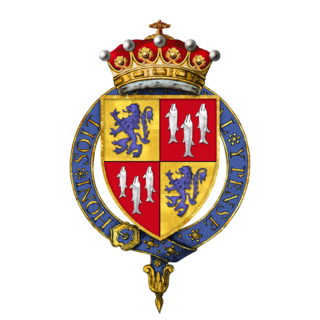 W
WHenry Percy, 4th Earl of Northumberland KG was an English aristocrat during the Wars of the Roses. After losing his title when his father was killed fighting the Yorkists, he later regained his position. He led the rear guard of Richard III's army at the Battle of Bosworth, but failed to commit his troops. He was briefly imprisoned by Henry VII, but later restored to his position. A few years later he was murdered by citizens of York during a revolt against Henry VII's taxation.
 W
WLady Isabel Neville was the elder daughter and co-heiress of Richard Neville, 16th Earl of Warwick, and Anne de Beauchamp, suo jure 16th Countess of Warwick. She was the wife of George Plantagenet, 1st Duke of Clarence. She was also the elder sister of Anne Neville, who was Princess of Wales by her first marriage and Queen consort of England by her second.
Isabella of Castile, Duchess of York was the daughter of King Peter and his mistress María de Padilla. She accompanied her elder sister, Constance, to England after Constance's marriage to John of Gaunt, 1st Duke of Lancaster, and married Gaunt's younger brother, Edmund of Langley, 1st Duke of York.
 W
WLambert Simnel was a pretender to the throne of England. In 1487, his claim to be Edward Plantagenet, 17th Earl of Warwick, threatened the newly established reign of Henry VII (1485–1509). Simnel became the figurehead of a Yorkist rebellion organised by John de la Pole, Earl of Lincoln. The rebellion was crushed in 1487. Simnel was pardoned because of his tender years, and was thereafter employed by the Royal household as a scullion, and, later, as a falconer.
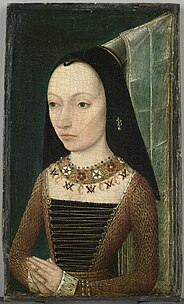 W
WMargaret of York —also by marriage known as Margaret of Burgundy—was Duchess of Burgundy as the third wife of Charles the Bold and acted as a protector of the Burgundian State after his death. She was a daughter of Richard, 3rd Duke of York, and Cecily Neville, and the sister of two kings of England, Edward IV and Richard III. She was born at Fotheringhay Castle, Northamptonshire, in the Kingdom of England, and she died at Mechelen in the Low Countries.
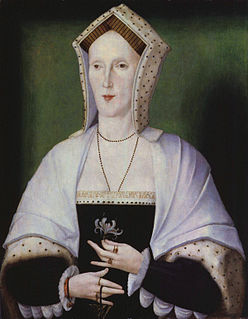 W
WMargaret Pole, Countess of Salisbury was the daughter of George, Duke of Clarence, and Isabel Neville and was niece of kings Edward IV and Richard III. Margaret was one of two women in 16th-century England to be a peeress in her own right with no titled husband. One of the few surviving members of the Plantagenet dynasty after the Wars of the Roses, she was executed in 1541 at the command of Henry VIII, who was the son of her first cousin Elizabeth of York. Pope Leo XIII beatified her as a martyr for the Catholic Church on 29 December 1886.
Mary of York was the second daughter of Edward IV of England and his queen consort Elizabeth Woodville.
 W
WPhilippa de Mohun was Duchess of York, as a result of her third marriage to Edward of Norwich, 2nd Duke of York (c.1373–1415), Lord of the Isle of Wight, a grandson of King Edward III (1327–1377). She succeeded her third husband as Lady of the Isle of Wight (1415–1431).
 W
WRichard de la Pole was a pretender to the English crown. Commonly nicknamed "White Rose", he was the last Yorkist claimant to actively and openly seek the crown of England. He lived in exile after many of his relatives were executed, becoming allied with Louis XII of France in the War of the League of Cambrai. Louis saw him as a more favourable ally and prospect for an English king than Henry VIII.
 W
WRichard III was King of England and Lord of Ireland from 26 June 1483 until his death in 1485. He was the last king of the House of York and the last of the Plantagenet dynasty. His defeat and death at the Battle of Bosworth Field, the last decisive battle of the Wars of the Roses, marked the end of the Middle Ages in England. He is the protagonist of Richard III, one of William Shakespeare's history plays.
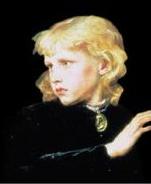 W
WRichard of Shrewsbury, Duke of York, was the sixth child and second son of King Edward IV of England and Elizabeth Woodville, born in Shrewsbury. Richard and his older brother, who briefly reigned as King Edward V of England, mysteriously disappeared shortly after Richard III became king in 1483.
 W
WRichard Plantagenet or Richard of Eastwell was a reclusive bricklayer who was claimed to be a son of Richard III, the last Plantagenet King of England.
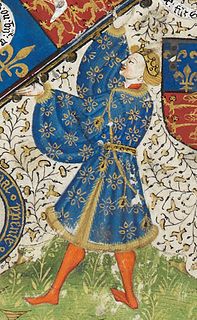 W
WRichard of York, 3rd Duke of York, also named Richard Plantagenet, was a leading English magnate, a great-grandson of King Edward III through his father, and a great-great-great-grandson of the same king through his mother. He inherited vast estates and served in various offices of state in Ireland, France, and England, a country he ultimately governed as Lord Protector during the madness of King Henry VI.
 W
WRichard of Conisbrough, 3rd Earl of Cambridge was the second son of Edmund of Langley, 1st Duke of York, and Isabella of Castile, Duchess of York. He was beheaded for his part in the Southampton Plot, a conspiracy against King Henry V. He was the father of Richard Plantagenet, 3rd Duke of York, and the grandfather of King Edward IV and King Richard III.
 W
WThomas Grey, 2nd Marquess of Dorset was an English peer, courtier, soldier, and landowner.